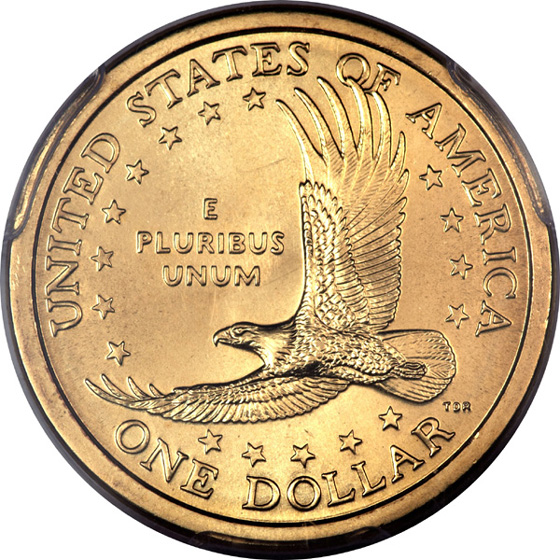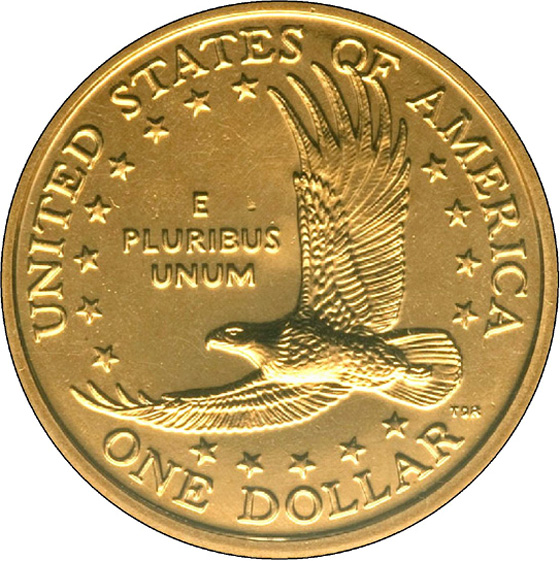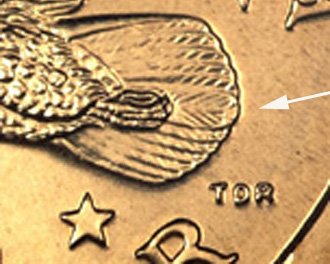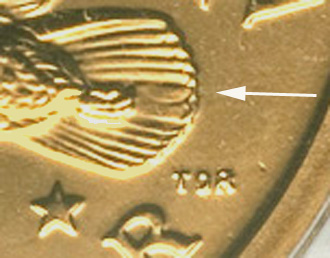PART I. Die Subtypes:
Patterns and Prototypes (accidentally released):
2000-P Sacagawea “Cheerios” dollar
Definition: In the early part of the year 2000, the U. S. Mint inserted newly minted 2000(P) Lincoln cents and 2000-P Sacagawea dollar coins into “Cheerios” cereal boxes. This promotion by the government was to make the public aware of the new golden dollar coin and involved over 10 million boxes of cereal. Out of the 10 million boxes, approximately 5,500 contained the 2000-P Sacagawea dollar coin which is now labeled as the “Cheerios” dollar.
It was later discovered that many of these “Cheerios” dollars were struck from a different master die than the normal 2000-P Sacagawea dollar coins. The difference can be seen in the tail feathers of the eagle on the reverse of the coin. The “Cheerios” dollar has enhanced feathers, while the normal dollar coin does not. See images below.
Tom DeLorey surmises that the Mint’s engraving department was still in the process of refining the Sacagawea dies and was not aware that the 5,500 sent to General Mills for packaging were struck with the enhanced tail feather dies. DeLorey further speculates that a small percentage of these coins were sent back to the Mint due to spoilage and then replaced by more recently struck Sacagawea coins without the enhanced tail feathers.
This meant that two types of dollars ended up inside Cheerios boxes; one type with the enhanced tail feathers and the other type without the enhanced tail feathers. The enhanced tail feather version is considered to be a prototype by collectors.
|
2000-P Sacagawea dollar with enhanced tail feathers. |
|
2000-P Sacagawea dollar without enhanced tail feathers. |
|
Enhanced tail feathers |
Without enhanced tail feathers |
|
Images are courtesy of Heritage Auctions. |



